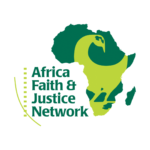By Iman Mekonen
Edited by Ntama Bahati
The ongoing armed conflict in Ethiopia’s Tigray region has displaced many people into neighboring countries. According to the Los Angeles Times, at least 45,000 Ethiopian — mostly Tigrayans — have fled to neighboring Sudan. Communication has been blocked off within the country, and for this reason there is little information available from the frontlines. The United Nations have declared this conflict as a humanitarian crisis. There has to be a peaceful solution to this ongoing armed conflict.
One of the triggers of the military campaign against the Tigray region is that the ethnic group held regional elections. The general election was originally set to take place in August 2020, but was delayed to 2021 due to the COVID-19 pandemic. In defiance of the federal government, the Tigray region, led by Debretsion Gebremichael, went forward with a regional election in September. Ethiopian Prime Minister Abiy Ahmed declared the Tigray election illegal. Further escalation came about when the Tigray People’s Liberation Front (TPLF) attacked a government military base in early November. This was met with force as Prime Minister Ahmed deployed the army to the Tigray region. On November 28, after the federal government forces captured Mekelle, the capital of the Tigray region, Prime Minister Ahmed declared the mission as over. However, if there was peace, the refugees from the neighboring countries would have returned home.
Prime Minister Ahmed received a Nobel Peace Prize in 2019 for making peace with its northern neighbor Eritrea. The strong ties with Eritrea presented a source of tension to the Tigray ethnic group. In December 2019, Ahmed formalized the creation of the Prosperity Party, a merger of eight independent parties to replace the Ethiopian People’s Revolutionary Democratic Front (EPRDF). The TPLF, a majority party in the EPRDF, criticized the formation of the Prosperity Party and refused to join.
Ethiopia, whose capital is Addis Ababa, has a population of over 112 million people and is divided into regions based ethnic groups, with majority ethnic groups including the Oromos and the Amharas. The Tigray region is located to the north of the capital and is home to the Tigray people, making up 6.1% of Ethiopia’s population according to the U.S. Central Intelligence Agency (CIA). The government in the Tigray region is represented by the Tigray People’s Liberation Front (TPLF). This minority group has held power in Ethiopia since 1991, and lost power when Prime Minister Ahmed was elected by the House of Representatives in 2018.
It is our hope that all parties will soon overcome their differences to privilege peace over war. Refugees cannot wait for another day to return home and those who stayed need to be assured that they will be alive the next day. We certainly denounce all violations of human rights and extrajudicial killings.
Read more:
https://www.aljazeera.com/news/2020/12/9/ethiopia-conflict-spiralling-out-of-control-un
Sources:
https://www.latimes.com/world-nation/story/2020-12-06/in-ethiopia-a-nobel-peace-laureate-goes-to-war
https://data.worldbank.org/indicator/SP.POP.TOTL?locations=ET
https://www.cia.gov/library/publications/the-world-factbook/geos/et.html
https://en.wikipedia.org/wiki/List_of_ethnic_groups_in_Ethiopia#cite_note-2
